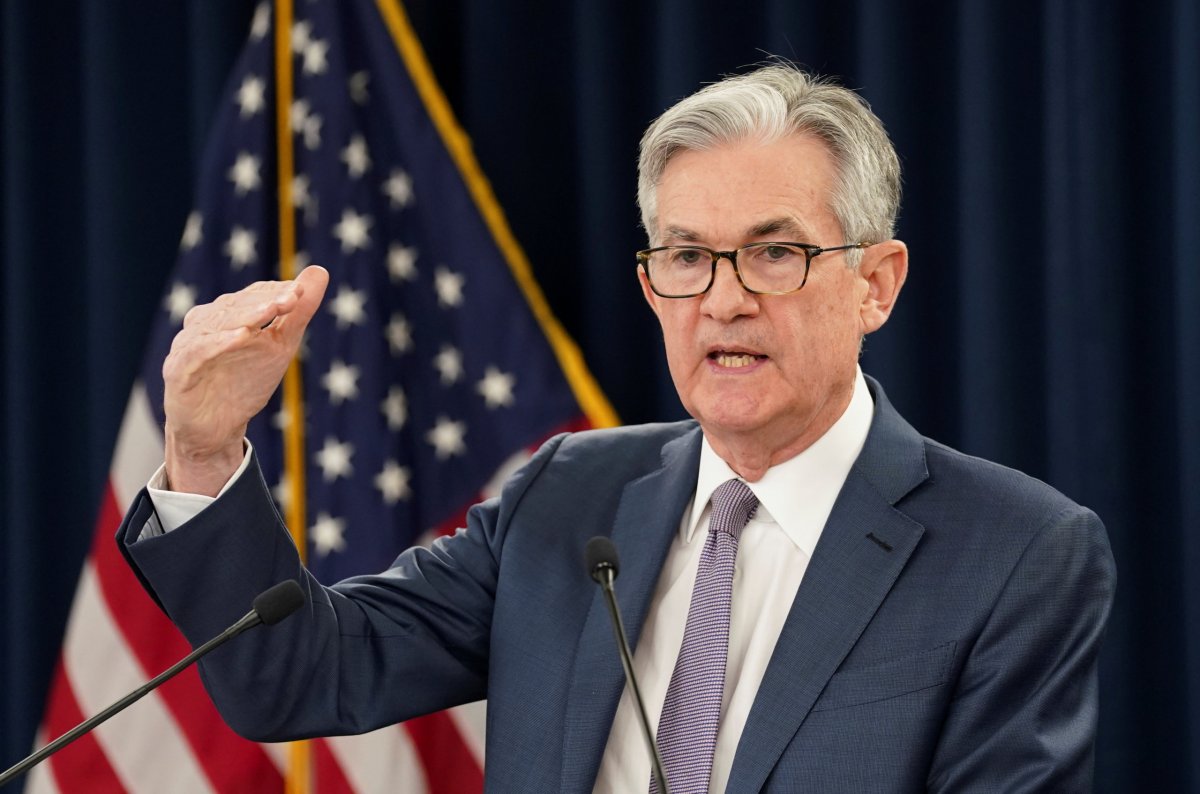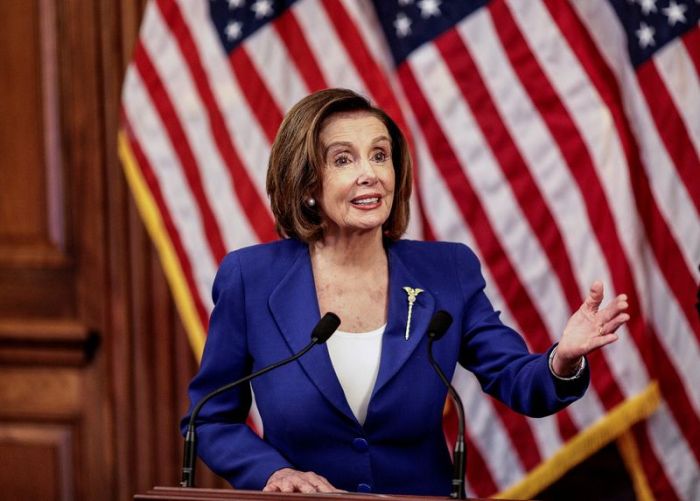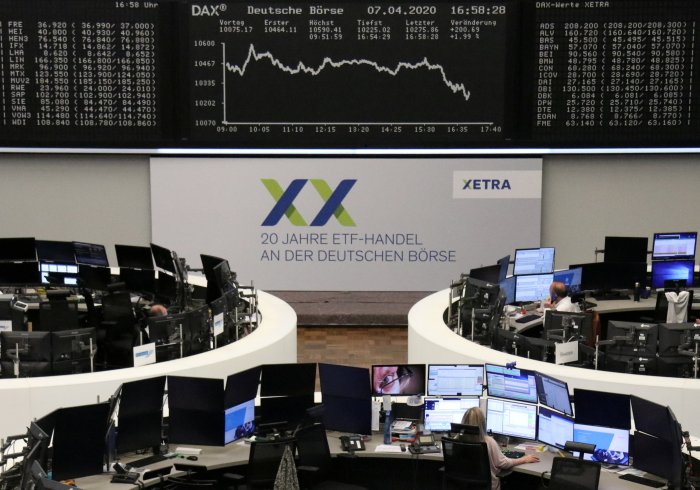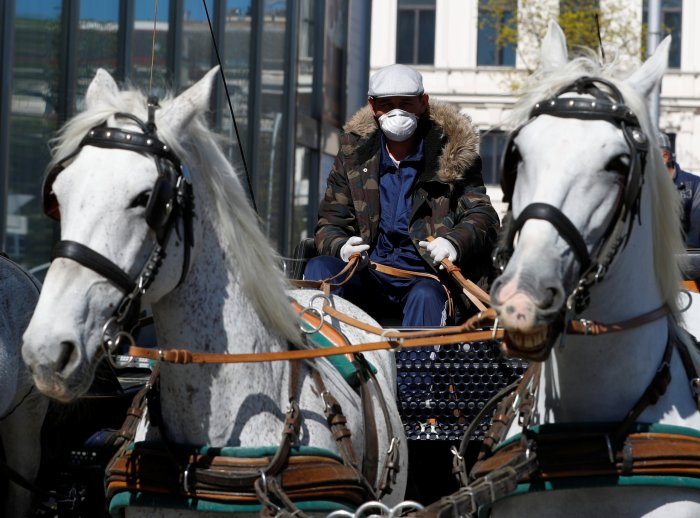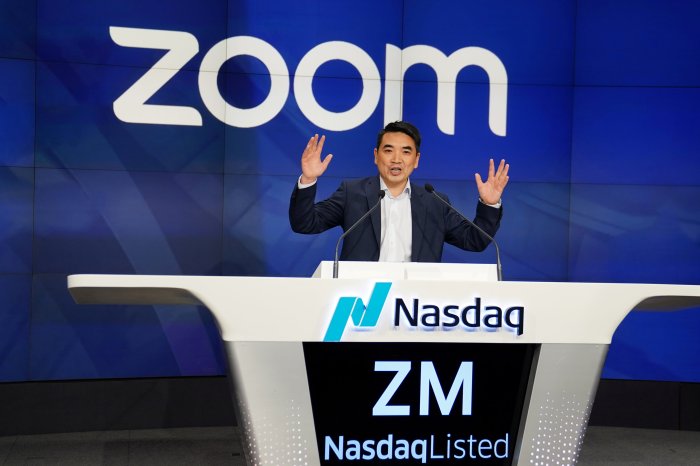(Reuters) – Faced with an accelerating health crisis centered around the coronavirus outbreak, U.S. Federal Reserve officials last month agreed they needed a pull-out-all-the-stops effort to blunt an economic meltdown as they struggled to comprehend the depth and scope of the risks faced by the world’s largest economy.
In the first detailed account of how the U.S. central bank decided to launch an historic economic rescue plan, minutes of the Fed’s emergency meetings in March showed policymakers trying to stay ahead of the rapidly spreading coronavirus pandemic with decisions that may shape the global economy for decades to come.
There was little disagreement over the policy choices, the minutes reflected, and little argument over the near-term fallout in terms of rising U.S. unemployment, collapsing consumer confidence, and the devastating blow to business.
But policymakers at the March 3 and 15th emergency meetings also displayed widespread uncertainty about what was to come, and a certain helplessness over a situation where the actions of health officials and elected leaders would be more central to the economy’s future.
Just weeks before, they were overseeing historic lows for unemployment and historic highs for stocks. Now they were plugging holes in “deteriorating” financial markets and having difficulty seeing what might happen even a few weeks ahead.
Policymakers offered “several alternative scenarios” for the economy, the minutes said, suggesting the world’s most powerful central bank was struggling alongside everyone else to glean whether the U.S. economy’s sudden stop would soon give way to a fast, “V-shaped” rebound, or cause more chronic, long-term damage.
“Participants prominently cited the possibility of the virus outbreak becoming more widespread than expected … with adverse implications for the production of goods and services and for aggregate demand,” the minutes stated. “Participants stressed that measures taken in the areas of health care policy and fiscal policy … would be important in shaping the timing and speed of the U.S. economy’s return to normal.”
The reaction was swift as Fed Chair Jerome Powell convened the emergency sessions. Policymakers agreed to slash interest rates back to zero, broaden access to U.S. dollars for foreign central banks, and restart the massive asset purchases that have come to define monetary policy in a crisis. The first rate cut was announced on March 3 following a videoconference begun on the evening of March 2.
According to a Reuters tally, the United States has recorded more than 417,000 confirmed cases of COVID-19, the respiratory illness caused by the novel coronavirus, and more than 14,000 deaths.
The rush of activity by the Fed actually began with an unscheduled statement from Powell released on Friday, Feb. 28, as stock markets were cratering, risk premiums on corporate bonds were widening dramatically and the U.S. Treasuries market was being whipsawed by deep illiquidity. Powell pledged that the Fed would “act as appropriate” to support the economy.
The following Monday evening, on March 2, Powell convened a videoconference with fellow policymakers at which Fed staff told them financial markets had taken the Fed chief’s statement as an indication the central bank would cut interest rates at or before its scheduled March 17-18 policy meeting.
Fed staff spoke of scenarios in which a widening of the coronavirus outbreak and more severe social-distancing actions to curb its spread “would be associated with a greater shutdown of production and disruption of supply chains, larger negative effects on consumer and business sentiment, more significant increases in unemployment, and worsening financial conditions.”
The Fed’s policy-setting committee then agreed unanimously to cut the central bank’s overnight benchmark lending rate by half a percentage point to a range of 1.00% to 1.25%.
BACK IN THE FRAY
Fed officials were forced back onto the front lines less than two weeks later after several large states, including California and New York, announced broad-based closures of all but “essential” businesses and government agencies to ensure that social-distancing mandates were abided by.
At a videoconference convened on the morning of Sunday, March 15, policymakers noted “that the measures — such as social distancing — taken in response to the pandemic, while needed to contain the outbreak, would nevertheless take a toll on U.S. economic activity in the near term.”
There was lengthy debate about just how long the disruption would last and no clear consensus reached on that point.
In the end, policymakers agreed to cut interest rates a full point back to near zero and restart buying bonds on a massive scale to restore order to the markets for Treasuries and mortgage-backed securities.
Not all Fed policymakers were on board with the big reduction in borrowing costs, however.
A few participants wanted to hold fire “to allow fiscal and public health policy responses to the coronavirus outbreak to take hold,” preserving further action for use if still required at that point, the minutes showed. They also worried about conveying a “negative signal” about the economic outlook.
In the end, Cleveland Fed President Loretta Mester was the only dissent among the rate-setting panel’s 10 voters.
“It seems as if the FOMC was pretty much in unison behind the broader decisions they’ve made,” said Kevin Flanagan, head of fixed income strategy at WisdomTree Asset Management in New York.
U.S. stocks extended gains to close higher and Treasury yields were mixed after the release of the minutes, which cast light on the speed with which Fed policymakers were pressed into launching an historically forceful response to the damage the outbreak and the efforts to contain it were inflicting on the U.S. economy.
Barely five weeks before the surprise rate cut announced on March 3, Powell and his colleagues had wrapped up their first policy meeting of the year with an air of cautious optimism. It looked like 2020 could be a year of steady growth and continued strength in the job market, a fresh updraft after a rocky 2019 in which the Fed cut rates three times to blunt the effects of the Trump administration’s trade war with China.
Minutes of that meeting included just eight references to “coronavirus,” and seven of those came from the staff briefings. Policymakers referenced coronavirus almost in passing as something that “warranted close watching,” according to minutes of that meeting.
In contrast, minutes of the two videoconferences in March referenced the outbreak 35 times.
Powell may shed more light on the Fed’s assessment of the still-unfolding crisis in a live webcast on Thursday. Hosted by the Brookings Institution in Washington, Powell will deliver prepared remarks at 10 a.m. EDT (1400 GMT) and then participate in a virtual question-and-answer session.
(Additional reporting by Ann Saphir and Dan Burns; Editing by Chizu Nomiyama and Paul Simao)

